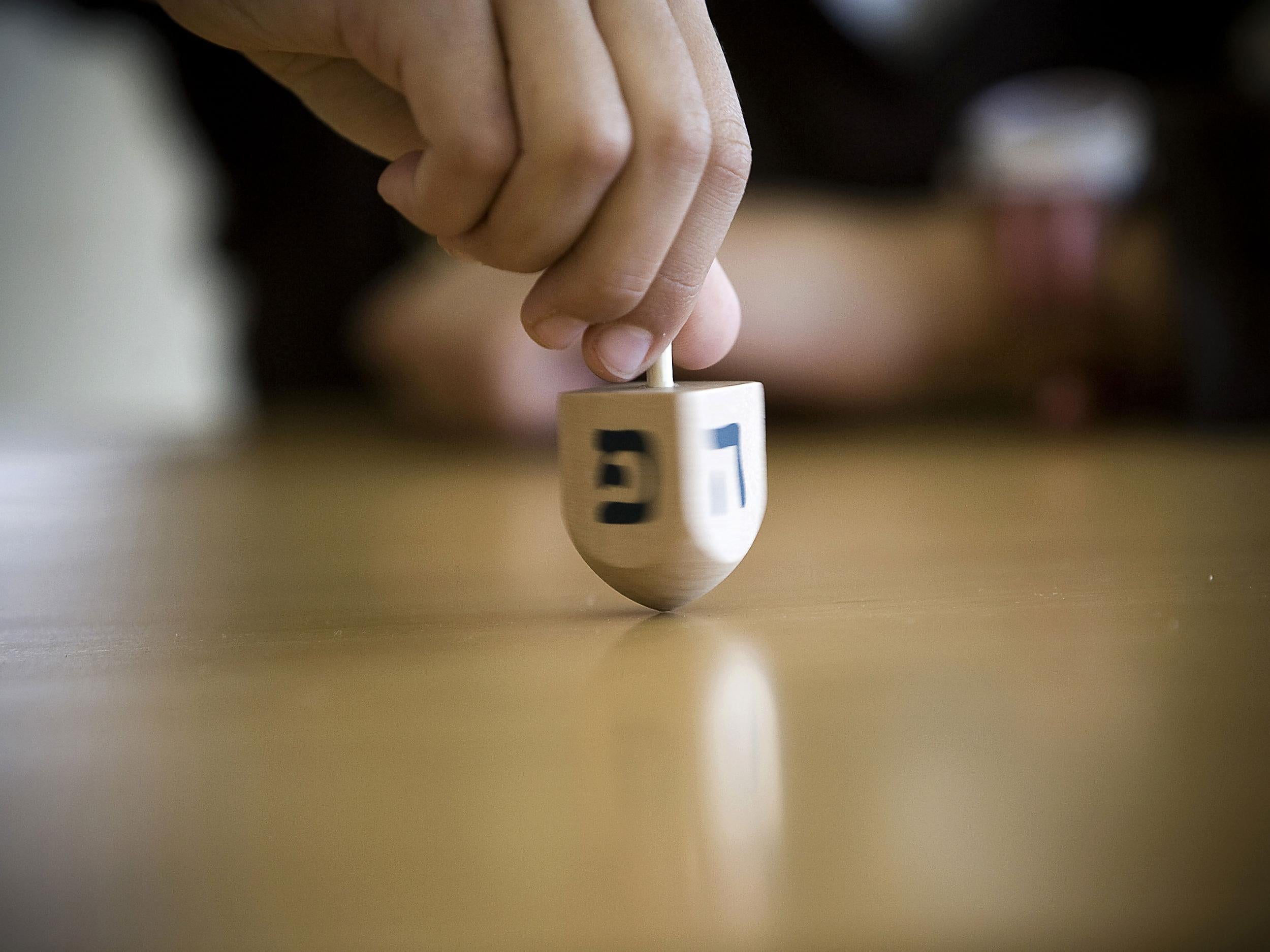Hanukkah 2023: Five facts you didn’t know about Festival of Lights
This year Hanukkah takes place between the 7 and 15 December
Your support helps us to tell the story
From reproductive rights to climate change to Big Tech, The Independent is on the ground when the story is developing. Whether it's investigating the financials of Elon Musk's pro-Trump PAC or producing our latest documentary, 'The A Word', which shines a light on the American women fighting for reproductive rights, we know how important it is to parse out the facts from the messaging.
At such a critical moment in US history, we need reporters on the ground. Your donation allows us to keep sending journalists to speak to both sides of the story.
The Independent is trusted by Americans across the entire political spectrum. And unlike many other quality news outlets, we choose not to lock Americans out of our reporting and analysis with paywalls. We believe quality journalism should be available to everyone, paid for by those who can afford it.
Your support makes all the difference.Jews across the world will spend eight days celebrating Hanukkah, or the Jewish Festival of Lights this month.
Between the 7 and 15 December, millions of candles will be lit in a menorah to commemorate the Jewish people’s struggle for religious freedom.
Here are five facts you may not know about the festival:
1. Hanukkah is the only Jewish holiday not mentioned in the Hebrew Bible
Unlike other major Jewish holidays, Hanukkah is not mentioned in the Hebrew Bible. Instead, its origins can be traced back to the mid-second century BCE.
During this time a Syrian king tried to make the Jewish people worship Greek gods. However, a small group of Jews called the Maccabees rebelled and eventually recaptured Jerusalem from the Syrians after a three year war.
During the battle their temple was destroyed and after building it again the people rededicated it to God by lighting a lamp.
Only one small jar of oil was found to be burnt, enough for one day, but miraculously the lamp stayed alight for eight days and Hanukkah celebrates this miracle.

2. Hanukkah means eating doughnuts
To commemorate the miracle of the burning lamp, Jews customarily eat foods fried in oil and this means doughnuts.
Sufganiyot is a round deep-fried doughnut filled with jelly or custard and topped with powdered sugar. It is served at meals throughout the holiday.
3. Chocolate coins
Chocolate coins or gelt (Yiddish for money) wrapped in gold and silver are exchanged at Hanukkah.
The origin of Hanukkah gelt is unclear, however coins are believed to be a symbol of the independence ancient Jews gained after their three year battle with Syria when they were able to make their own coins.

4. Spinning the Dreidel
Gelt is also used in a game played with a spinning top called a dreidel at Hanukkah.
Players sit in a circle and put a chocolate coin in the middle. Each person takes a turn at spinning the cube-shaped dreidel, which has a Hebrew letter on each side.
The letter the dreidel shows when it has finished spinning determines whether players win or loose the coins.
Children also traditionally sing a song called I Have a Little Dreidel during the celebrations.
5) Exchanging gifts
Traditionally Jews only exchanged gifts on Purim, a Jewish holiday commemorating the time when the Jewish people living in Persia were saved from extermination by a young woman called Esther.
However, when Christmas became more prominent in the late 19th century and the Christian holiday’s consumerism grew, the Jewish custom shifted in imitation of Christmas.

Join our commenting forum
Join thought-provoking conversations, follow other Independent readers and see their replies
Comments